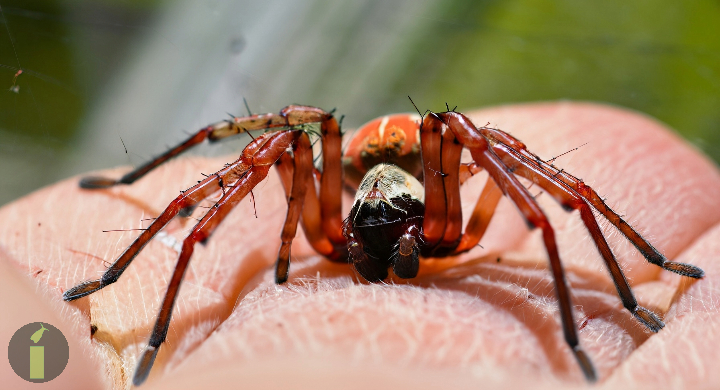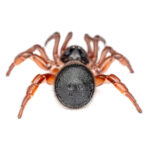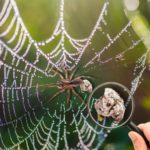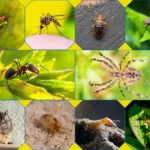Welcome to the interesting world of spiders, where nature shows us small but important details in the form of the red house spider. In this detailed guide, we go into great depth about the amazing world of these eight-legged wonders, including their behavior, where they live, and how important they are to the environment. Join us on a quest to find out more about the red house spider, which plays a vital role in maintaining the balance of nature.
This article tells you everything you need to know about red spiders, including how they look, where they live, what they eat, how they reproduce, and how dangerous they are to people. Let’s look at the red house spider, an insect that is often forgotten.
Table of contents
- Overview of the Red House Spider
- Physical characteristics of the Red House Spider
- Habitat of Red House Spiders
- Distribution of Red House Spiders
- Behavior of Red House Spiders
- Diet of Red House Spiders
- Reproduction of Red House Spiders
- Life cycle of Red House Spiders
- Venom Characteristics of Red House Spiders
- Bite symptoms of Red House Spiders
- Scientific Interest in Red House Spiders
- Medical Considerations of Red House Spiders
- Pest Control of Red House Spiders
- Biodiversity of Red House Spiders
- Adaptability of Red House Spiders
- Education and Awareness about Red House Spiders
- Scientific Interest in Red House Spiders
- Conclusion
- Frequently Asked Questions about Red House Spiders
Overview of the Red House Spider
The widow spider family includes the fascinating red house spider (Latrodectus bishopi). This species, which is distinguished by its unusual and striking look, has adapted to live with people and is frequently found in and around residential areas.
Latrodectus bishopi, the scientific name for the red house spider, is a member of the widow spider family. This arachnid stands out from the others thanks to its eye-catching red and black markings, even though it is modest in size. These spiders, which are primarily found in residential settings, have adapted to live with people, thus people frequently see them in and near homes.

Physical characteristics of the Red House Spider
The distinctive physical characteristics of the red house spider (Latrodectus bishopi) add to its unusual and eye-catching look. The red house spider’s primary physical traits are as follows:

Size of Red House Spiders
Red house spiders are typically 5 to 8 millimeters long, making them relatively modest. They may move around and weave webs in small areas because of their small size.
Colors of Red House Spiders
The red house spider’s striking hue is its most distinctive characteristic. The spider’s abdomen is covered with bright red patterns that contrast sharply with its mostly black exoskeleton.
Marks on the Abdomen
The red house spider has elaborate, variably designed red markings on its abdomen. These aesthetically pleasing markings add to the spider’s overall distinctive appearance.
Unique Patterns
The red markings on each red house spider’s abdomen may vary from one individual to the next, giving the species a touch of uniqueness. Researchers and enthusiasts frequently use this distinctiveness for identification.
Spines
Red house spiders have spinnerets, which are organs at the back of their abdomen that produce silk, just like all other spiders. In order to create webs and produce silk for a variety of uses, including egg sacs, spinnerets are essential.
Legs
The eight long, thin legs of red house spiders help with their locomotion and web-building endeavors. Usually dark in hue, the legs accentuate the spider’s overall appearance.
Venomous Fangs
The red house spider is a member of the widow spider family and has poisonous fangs. However, the spider is not aggressive unless provoked, and its venom is generally not thought to be medically significant for humans.
Dimorphism in Sexuality
Within the species, there is sexual dimorphism, with females being larger than males. Additionally, the red markings on the abdomens of female red house spiders are typically more noticeable and detailed.
Habitat of Red House Spiders
Residential Areas
Homes and their environs are often home to red house spiders. They seem to prefer to weave their webs in places with protection, such as garden sheds, window sills, and room corners.
Man-Made Structures
These spiders have adapted to live in human-made structures. They do best in settings where they can locate good spots to weave webs and ensnare prey.
Sheltered Spaces
For the purpose of creating their webs, spiders frequently select isolated, protected areas. They are protected from predators and unfavorable weather conditions by this choice of habitat.
Distribution of Red House Spiders
Widespread Distribution
Red house spiders are widespread and can be found in many different places. Their adaptability to different environments allows them to thrive in diverse climates.
Global Presence
While specific distribution patterns may vary, red house spiders are known to exist in regions across the globe. Their presence has been documented in areas with temperate and subtropical climates.
Urban and Suburban Areas
Red house spiders are most frequently found in urban and suburban areas because of their propensity to reside in and around human structures. The locals now recognize them as a familiar sight.
Indoor and Outdoor Spaces
Not all red house spider habitats are found outdoors. They can also be found indoors, particularly in peaceful, uninhabited areas of houses.
Adaptability
The adaptability of red house spiders to various habitats contributes to their success in colonizing different regions. This adaptability extends to changes in the immediate environment, allowing them to coexist with humans effectively.
Behavior of Red House Spiders
Nocturnal Habits
Because they are primarily nocturnal, red house spiders are busiest at night. Since many of their prey, including insects, are active at night, this behavior is beneficial to their hunting endeavors.
Web Construction
These spiders are expert weavers; they weave complex, sticky webs to entice prey. Red house spiders produce strong, sticky silk that is excellent at ensnaring small insects.
Sheltered Locations
The best places for red house spiders to weave their webs are in covered areas. Typical locations include garden sheds, window sills, and room corners. This selection of habitat offers defense against unfavorable weather and possible predators.
Solitary Nature
Red house spiders are typically solitary in nature, and encounters between individuals are infrequent outside of mating or courtship rituals.
Courtship and Reproduction
Mating involves intricate courtship rituals, with males approaching females cautiously. After successful mating, females produce silk egg sacs to protect and nurture their eggs until they hatch.
Diet of Red House Spiders
Insectivorous Diet
As insectivores, red house spiders mainly feed on tiny insects that become entangled in their webs. Flies, mosquitoes, and other small arthropods are common prey.
Web Hunting
The purpose of the spiders’ webs is to aid in hunting. The red house spider swiftly immobilizes insects that become tangled in its sticky silk and injects venom to subdue the victim.
Contribution to Pest Control
Because red house spiders manage the populations of bothersome insects, they are beneficial in the fight against pests. Their existence within and surrounding human habitats aids in controlling the number of possible pests.
Selective Feeding
Red house spiders are opportunistic feeders, but they usually go after smaller insects that fit within their web’s control.
Reproduction of Red House Spiders
Courtship Rituals
Mating in red house spiders begins with intricate courtship rituals. Male spiders approach females with caution, indicating their intentions with distinct behaviors and movements.
Mating and Sperm Transfer
When courtship is successful, the male uses structures known as pedipalps to transfer sperm to the female. This guarantees that the female’s eggs will be fertilized.
Egg Sac Production
The female red house spider spins silk to form an egg sac following mating. Protecting the developing eggs from external influences and possible predators, this sac acts as a barrier.
Egg Deposition
Within the silk egg sac, the female lays her eggs. The female carefully guards the sac during the incubation period, and the number of eggs can vary.
Life cycle of Red House Spiders
Incubation Period
Throughout the incubation phase, the female protects the egg sac. The length of this time can change based on outside factors like humidity and temperature.
Hatching
The eggs hatch after the incubation period is over, releasing spiderlings. These are tiny spiderlings that develop further outside the egg sac.
Spiderling Stage
In essence, spiderlings are tiny versions of mature spiders. As they develop, they go through several molting stages in which they shed their exoskeletons. They go through this process until they are mature.
Molting
A vital part of the life cycle of the red house spider is molting. In order to make room for their developing bodies, spiderlings shed their exoskeletons. Every molt signifies a stage of development.
Maturation
Spiderlings eventually develop into adult red house spiders as they molt further. The development of reproductive organs and the full expression of the characteristic red and black coloring are aspects of the maturation process.
Adult Stage
Red house spiders are prepared to reproduce and mate when they reach adulthood, finishing their life cycle. They can maintain the species’ existence and contribute to the population at the adult stage.
Venom Characteristics of Red House Spiders
Low Toxicity
When compared to the venom of certain other widow spiders, red house spiders are thought to have less toxic venom. Usually, the venom has mild, localized effects.
Venom Composition
Red house spider venom is composed of a variety of proteins and enzymes. Its purpose, like that of other widow spiders, is to subdue its prey, which is mostly small insects.
Non-Aggressive Nature
Red house spiders are not aggressive towards humans and generally bite only in self-defense when they feel threatened or provoked.
Bite symptoms of Red House Spiders
Localized Effects
Localized symptoms may appear at the bite site after a red house spider bite. This may manifest as edema, redness, and pain.
Mild Systemic Symptoms
In some cases, individuals may experience mild systemic symptoms such as headaches, muscle pain, or nausea. Severe reactions are uncommon, though.
Individual Variability
People respond differently to spider bites. Some individuals may be more sensitive to bites than others.
Scientific Interest in Red House Spiders
Research Opportunities
Understanding red house spider behavior, ecology, and physiology can help one better understand the creatures’ biology. Research in science can expand our knowledge of ecology and improve our comprehension of the natural world.re allergic or sensitive to the venom, which could result in more severe symptoms.
Medical Considerations of Red House Spiders
Seeking Medical Attention
Even though red house spider bite symptoms are usually minor and go away on their own, people who suffer from severe reactions or allergic reactions should see a doctor.
First Aid
First aid for a red house spider bite consists of washing the bite site with soap and water, using a cold compress to minimize swelling, and, if necessary, taking over-the-counter painkillers.
Rare Severe Reactions
It is rare for red house spider bites to cause severe reactions. Timely medical attention is imperative in cases of severe symptoms, such as dyspnea, chest pain, or widespread swelling.
Pest Control of Red House Spiders
Insect Population Regulation
Because they feed on tiny insects, red house spiders are essential for controlling pests. Flies, mosquitoes, and other bothersome insects that might infiltrate houses or gardens make up their main food source.
Natural Predators
Red house spiders serve as natural predators, regulating insect populations. This can be especially helpful in suburban and urban areas where there may be an issue with insects.
Biodiversity of Red House Spiders
Contribution to Biodiversity
By filling particular niches, red house spiders enhance the overall biodiversity of ecosystems. Their role as insectivores adds to the diversity of species within their habitat.
Balanced Ecosystems
Red house spiders indirectly support ecosystem balance by controlling insect populations. The sustainability and well-being of natural environments depend on the maintenance of balanced ecosystems.
Adaptability of Red House Spiders
Survival in Human-Altered Environments
Red house spiders have shown adaptability to living in close proximity to human habitats. Their ability to thrive in urban and suburban settings demonstrates resilience and adaptability in the face of habitat changes.
Coexistence with Humans
Red house spiders exhibit a type of coexistence with humans because they frequently weave their webs inside and around homes. A more peaceful approach to coexisting with wildlife in living areas can result from an appreciation and understanding of this relationship.
Education and Awareness about Red House Spiders
Public Perception
Clearing up misunderstandings and anxieties is aided by educating people about red house spiders’ ecological significance. Raising awareness can help people appreciate these spiders and all that they have to offer.
Conservation of Urban Wildlife
A more comprehensive understanding of the conservation of various species, including those frequently found in residential areas, can be facilitated by acknowledging the significance of red house spiders as members of urban wildlife.
Scientific Interest in Red House Spiders
Research Opportunities
Understanding red house spider behavior, ecology, and physiology can help one better understand the creatures’ biology. Research in science can expand our knowledge of ecology and improve our comprehension of the natural world.
Conclusion
To sum up, the red house spider is an amazing species that deserves respect and knowledge. Additionally, from its visually striking appearance, these spiders contribute to the delicate balance of nature. In conclusion, red house spider is an amazing part of the natural world.
Read More: Is It An Ancient Coin Or A Cork-Lid Trapdoor Spider?
Frequently Asked Questions about Red House Spiders
Q1. How to get rid of red house spiders?
First, inspect your home for entry points and harborage areas. Then, seal any gaps and cracks to prevent spiders from entering. Next, remove cobwebs and clean and organize your area to eliminate hiding spots for spiders. After that, apply a perimeter insecticide to create a barrier against spiders. Additionally, set traps to capture any spiders that may be present. Finally, treat individual spiders to get rid of them completely.
Q2. What do red house spiders hate the most?
Additionally, strong scents such as citrus, peppermint, tea tree, lavender, rose, or cinnamon have been found to repel spiders.
Q3. How do I permanently remove spider webs from my house?
How Spider Webs Can Be Removed. Removing spider webs is not too difficult. All you need is a vacuum with a hose attachment or a broom. Just take out the spider web once you have one of these cleaning tools at your disposal.
Q4. What attracts Red House Spiders in the house?
First of all, spiders are drawn to a variety of things in their quest for food, shelter, and opportunities for mating. Additionally, a few common elements that draw spiders are moisture, warm, dark areas, and the presence of insects or other prey.





